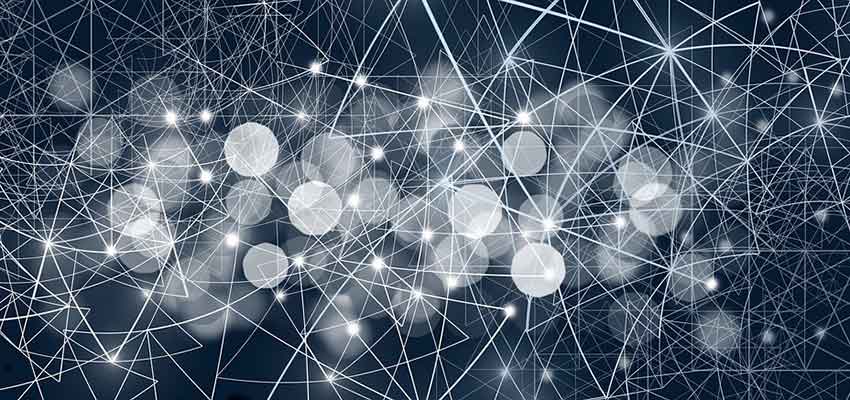Show:
Unleashing Creativity: How AI Is Revolutionizing Content Creation
The digital revolution has seen countless breakthroughs across various sectors, but perhaps none as significantly as in the realm of content creation. In the contemporary digital age, industries are witnessing an unprecedented shift in how content is produced, distributed, and consumed, a large part of which can be attributed to the rise of artificial intelligence (AI). AI has turned the tables, enabling a new breed of content that’s faster, more personalized, and increasingly interactive.

The Emergence Of AI In Content Creation
The onset of AI in content creation is not entirely new. The trend began as an offshoot of digital transformation initiatives, which sought to automate routine tasks. Businesses initially used AI for simple automation, like scheduling social media posts or analyzing marketing data.
However, as AI technologies advanced, their potential in content creation began to unfold. Today, AI tools can generate written content, create graphic designs, compose music, and even produce videos, significantly affecting how content is created and used in fields like marketing, entertainment, journalism, and more.
1. AI And Written Content
Artificial Intelligence is changing the game for writers, marketers, and publishers by generating high-quality written content at an unprecedented speed and scale. Natural Language Processing (NLP), a subset of AI, has led the way in this revolution.
One of the first significant uses of AI in content creation was the Associated Press utilizing AI to automatically generate news stories on corporate earnings reports. Since then, AI essay writer tools, powered by the latest version of the transformer-based language model, have shown that AI can generate incredibly convincing human-like text, given an appropriate prompt.
These AI essay writer tools have become a boon for businesses that need to produce a high volume of content regularly. They can generate articles, product descriptions, email copies, social media posts, and more with minimal human intervention.
This doesn’t mean that AI will replace human writers. Instead, it’s an opportunity to enhance creativity. AI can take care of the more monotonous aspects of writing, like researching facts or figures, allowing writers to focus on crafting more creative, engaging narratives.
2. AI And Graphic Design
Beyond the written word, AI has made significant strides in visual content creation, particularly in graphic design. AI-driven design tools can now automate the design process, creating anything from logos to full website layouts.
These AI design tools are often based on Generative Adversarial Networks (GANs), a type of deep learning model. GANs can generate new content that mimics a given dataset—in this case, design elements. They have given rise to tools like DeepArt and Artbreeder, which transform user-uploaded images into artwork in the style of famous painters.
Automated design doesn’t mean the end of human designers but rather a shift in their role. Much like in writing, AI can take over more routine tasks, such as resizing images for different platforms or creating initial design drafts, freeing up designers to focus on the more creative aspects of their work.

3. AI And Music Production
AI’s influence on music creation is perhaps one of the most fascinating developments. Machine learning algorithms can now compose music in a variety of genres and styles. Reputable companies are at the forefront of this revolution, offering platforms that can compose unique pieces of music in minutes.
These technologies use deep learning to analyze large datasets of music. They can pick up patterns, styles, and structures in the music, and use these elements to compose new pieces. The results can range from simple background scores to complex orchestral pieces, making AI a valuable tool for composers, producers, and artists.
Yet, much like in other fields, AI isn’t here to replace human musicians. Instead, it’s becoming a tool that can assist in the creative process, helping musicians experiment with new styles or creating drafts that can be developed into more complete pieces.
4. AI And Video Production
In the realm of video production, AI’s capabilities range from automated video editing to creating realistic deepfake videos. Automated editing tools can analyze a video’s content, automatically cut or combine clips, add effects, and even sync it to a music track. Meanwhile, deepfake technology uses GANs to generate convincing videos of people doing or saying things they never did.
These technologies can significantly speed up the video production process and open new doors for creativity. For instance, AI can create realistic visual effects without the need for costly and time-consuming CGI. On the other hand, deepfakes offer exciting possibilities for the film industry, such as the ability to ‘resurrect’ deceased actors or enable older actors to play their younger selves.
However, these technologies also raise important ethical questions. Misuse of deepfake technology could lead to misinformation, identity theft, and other serious issues. As such, it’s essential to develop and enforce robust ethical guidelines for AI use in video production.
5. Personalization And Interactivity
Another significant way AI is revolutionizing content creation is through personalization and interactivity. AI can analyze a user’s behavior and preferences to deliver personalized content, enhancing the user experience and engagement.
In the realm of digital marketing, for example, AI can generate personalized ad copies or email marketing campaigns that are more likely to engage the target audience. Interactive AI, such as chatbots, can provide personalized customer service or act as virtual shopping assistants.
Meanwhile, in entertainment, AI-powered recommendation algorithms can suggest content based on a user’s viewing history, while interactive AI characters can create dynamic, personalized experiences in video games.
The Future Of AI In Content Creation
As you look toward the future, it’s clear that AI will continue to play an increasingly significant role in content creation. It has become a tool that can take over routine tasks, enables new forms of creativity, and enhance the personalization and interactivity of content.
Ultimately, the key to unlocking the full potential of AI in content creation lies in the synergy between humans and machines. By leveraging AI’s capabilities while maintaining human oversight, you can usher in a new era of content creation that’s more dynamic, personalized, and engaging than ever before.
Nevertheless, it’s essential to remember that as AI continues to permeate content creation, one must address the ethical implications. The development of robust ethical guidelines, regulations, and AI literacy will be paramount to ensure that AI serves as a tool for enhancing creativity, not a means for misinformation or manipulation.

 Return to Previous Page
Return to Previous Page








